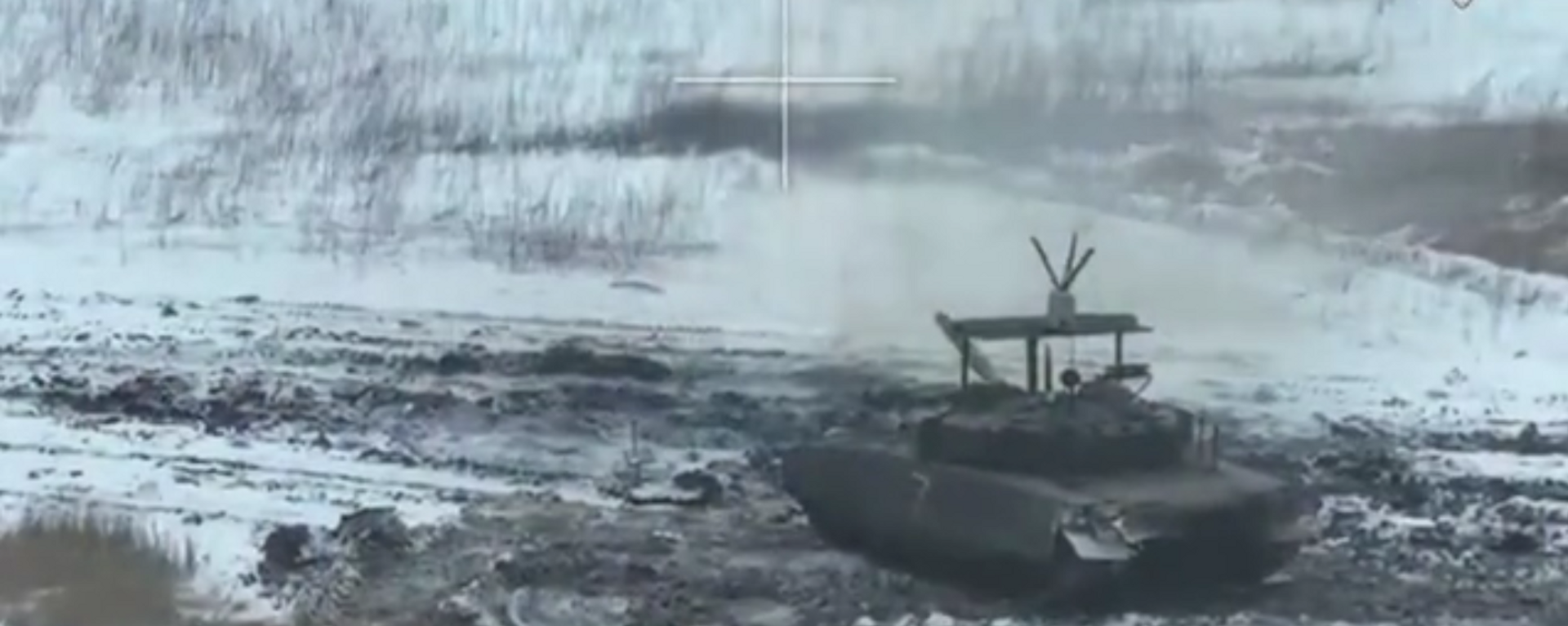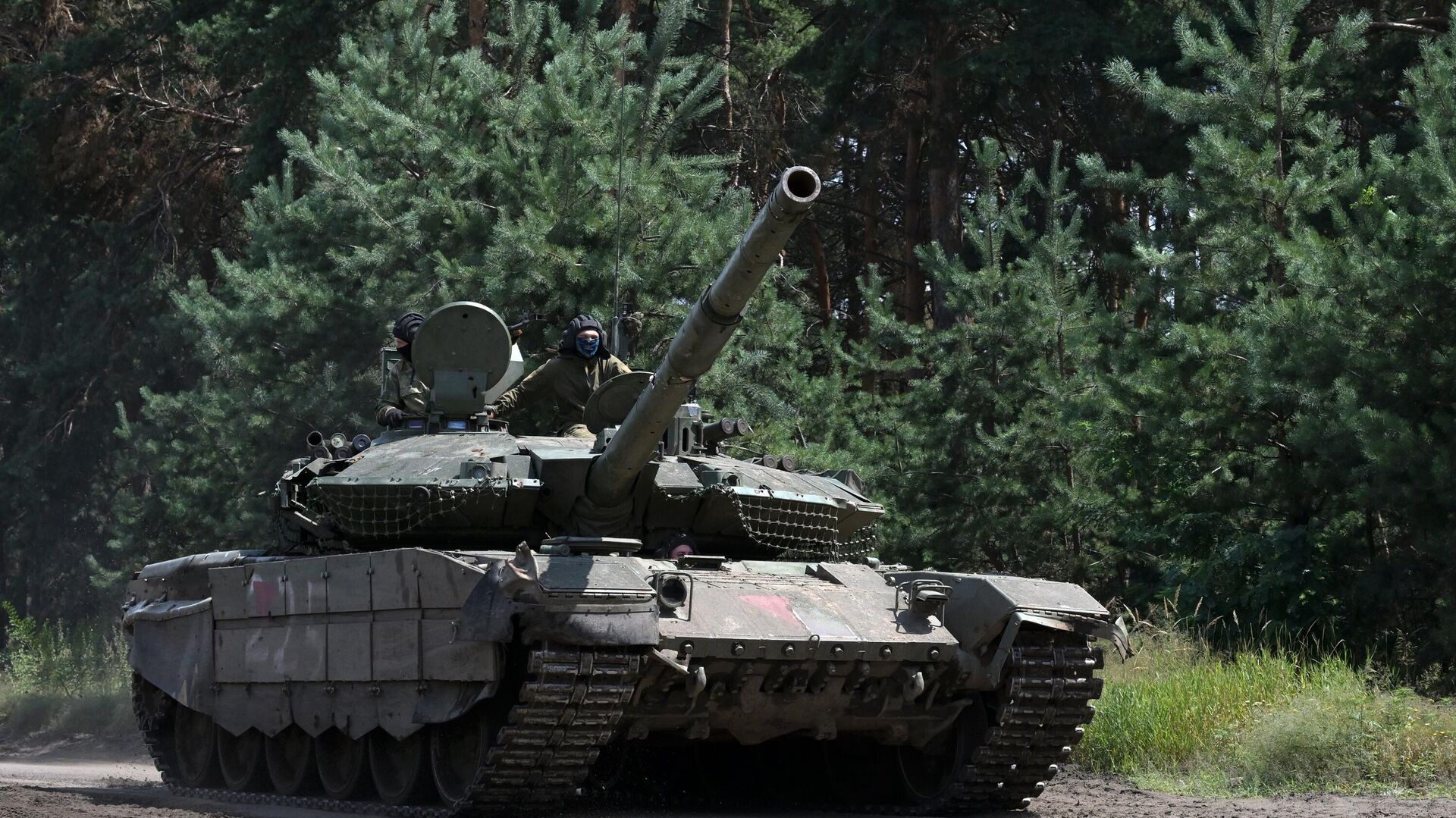https://sputnikglobe.com/20240121/which-high-tech-solutions-protect-russian-tanks-in-battle-1116303144.html
Which High-Tech Solutions Protect Russian Tanks in Battle?
Which High-Tech Solutions Protect Russian Tanks in Battle?
Sputnik International
In order not to fall prey to loitering drones or anti-tank missiles, a tank needs to be fitted with sophisticated defenses that increase the armored vehicle’s survivability.So what high-tech measures does Russia, the proud owner of one of the largest tank forces in the world, employ to keep its armored forces out of harm’s way?
2024-01-21T18:34+0000
2024-01-21T18:34+0000
2024-01-21T18:34+0000
military
military & intelligence
russia
tanks
active protection system (aps)
anti-drone technology
reactive armor
camouflage
https://cdn1.img.sputnikglobe.com/img/07e7/0a/07/1114000268_0:183:2994:1867_1920x0_80_0_0_cbb5b2e2fd73dfa4fc058528321593fb.jpg
In order not to fall prey to loitering drones or anti-tank missiles, a tank needs to be fitted with sophisticated defenses that increase the armored vehicle’s survivability.So what high-tech measures does Russia, the proud owner of one of the largest tank forces in the world, employ to keep its armored forces out of harm’s way?Active Protection SystemAn active protection system is a system designed to intercept incoming projectiles by detecting them in time and shooting them down with projectiles of its own.The development of active protection in Russia started during the Soviet era in the 1960s when it became increasingly apparent that thick armor alone was not enough to stop an armor-piercing shell.The recently-developed Arena-M active protection system, however, is a far cry from those earlier Soviet contraptions.The new system can detect incoming threats and take them down before they reach the tank, at a range of up to 50 meters, by firing fragmentation munitions that detonate in midair and tear the incoming projectiles with a hail of shrapnel.According to the publicly available data, Arena-M can intercept all kinds of anti-tank guided missiles, including supersonic ones.Reactive ArmorEven if a projectile manages to bypass a tank’s active protection system, many modern tanks feature one more layer of defense – the reactive armor.Reactive armor is essentially comprised of a layer of small box-like containers that house an explosive charge and specially shaped metal plates.When an incoming projective strikes reactive armor, the charge inside the container detonates and the resulting shaped explosion destroys the incoming threat before it can penetrate the tank’s proper armor.The reactive armor that Russia currently has at its disposal is good enough to protect a tank from attacks by armor-piercing munitions and even by kamikaze drones.Anti-Drone SystemRecent armed conflicts revealed that tanks can be particularly vulnerable to loitering munitions and kamikaze drone attacks.But what good is a drone if it were to go out of action before reaching the intended target?Enter the Saniya anti-drone system that has recently been sighted on Russian tanks operating in the Ukrainian conflict zone.Saniya is capable of creating a protective dome of sorts around the vehicle it is installed on, by suppressing enemy drone signals and rendering such craft unable to home in on the tank.Radar and Thermal CamouflageLast but not least, there is Nakidka (lit. “cloak”), a special fabric produced by Russia’s Scientific Research Institute of Steel.When draped on a tank or some other armored vehicle, this fabric makes it a lot less visible to radars and thermal imaging systems, not to mention that the Nakidka acts as old-fashioned camouflage as well.
https://sputnikglobe.com/20240114/watch-new-russian-anti-drone-system-safeguard-tank-in-ukrainian-conflict-1116155951.html
russia
Sputnik International
feedback@sputniknews.com
+74956456601
MIA „Rossiya Segodnya“
2024
Sputnik International
feedback@sputniknews.com
+74956456601
MIA „Rossiya Segodnya“
News
en_EN
Sputnik International
feedback@sputniknews.com
+74956456601
MIA „Rossiya Segodnya“
Sputnik International
feedback@sputniknews.com
+74956456601
MIA „Rossiya Segodnya“
russia active protection system, russia reactive armor, russia anti drone system
russia active protection system, russia reactive armor, russia anti drone system
Which High-Tech Solutions Protect Russian Tanks in Battle?
Conflicts around the globe have confirmed one simple fact: a main battle tank may be a potent weapon, but it is by no means invincible.
In order not to fall prey to loitering drones or anti-tank missiles, a
tank needs to be fitted with sophisticated defenses that increase the armored vehicle’s survivability.
So what high-tech measures does Russia, the proud owner of one of the largest tank forces in the world, employ to keep its armored forces out of harm’s way?
An active protection system is a system designed to intercept incoming projectiles by detecting them in time and shooting them down with projectiles of its own.
The development of active protection in Russia started during the Soviet era in the 1960s when it became increasingly apparent that thick armor alone was not enough to stop an armor-piercing shell.
The recently-developed Arena-M active protection system, however, is a far cry from those earlier Soviet contraptions.
The new system can detect incoming threats and take them down before they reach the tank, at a range of up to 50 meters, by firing fragmentation munitions that detonate in midair and tear the incoming projectiles with a hail of shrapnel.
According to the publicly available data, Arena-M can intercept all kinds of
anti-tank guided missiles, including supersonic ones.
Even if a projectile manages to bypass a tank’s active protection system, many modern tanks feature one more layer of defense – the reactive armor.
Reactive armor is essentially comprised of a layer of small box-like containers that house an explosive charge and specially shaped metal plates.
When an incoming projective strikes reactive armor, the charge inside the container detonates and the resulting shaped explosion destroys the incoming threat before it can penetrate the tank’s proper armor.
The reactive armor that Russia currently has at its disposal is good enough to protect a tank from attacks by armor-piercing munitions and even by kamikaze drones.
Recent armed conflicts revealed that tanks can be particularly vulnerable to loitering munitions and kamikaze drone attacks.
But what good is a drone if it were to go out of action before reaching the intended target?

14 January 2024, 12:45 GMT
Enter the Saniya anti-drone system that has recently been sighted on Russian tanks operating in the Ukrainian conflict zone.
Saniya is capable of creating a protective dome of sorts around the vehicle it is installed on, by suppressing enemy drone signals and rendering such craft unable to home in on the tank.
Radar and Thermal Camouflage
Last but not least, there is
Nakidka (lit. “cloak”), a
special fabric produced by Russia’s Scientific Research Institute of Steel.
When draped on a tank or some other armored vehicle, this fabric makes it a lot less visible to radars and thermal imaging systems, not to mention that the Nakidka acts as old-fashioned camouflage as well.



